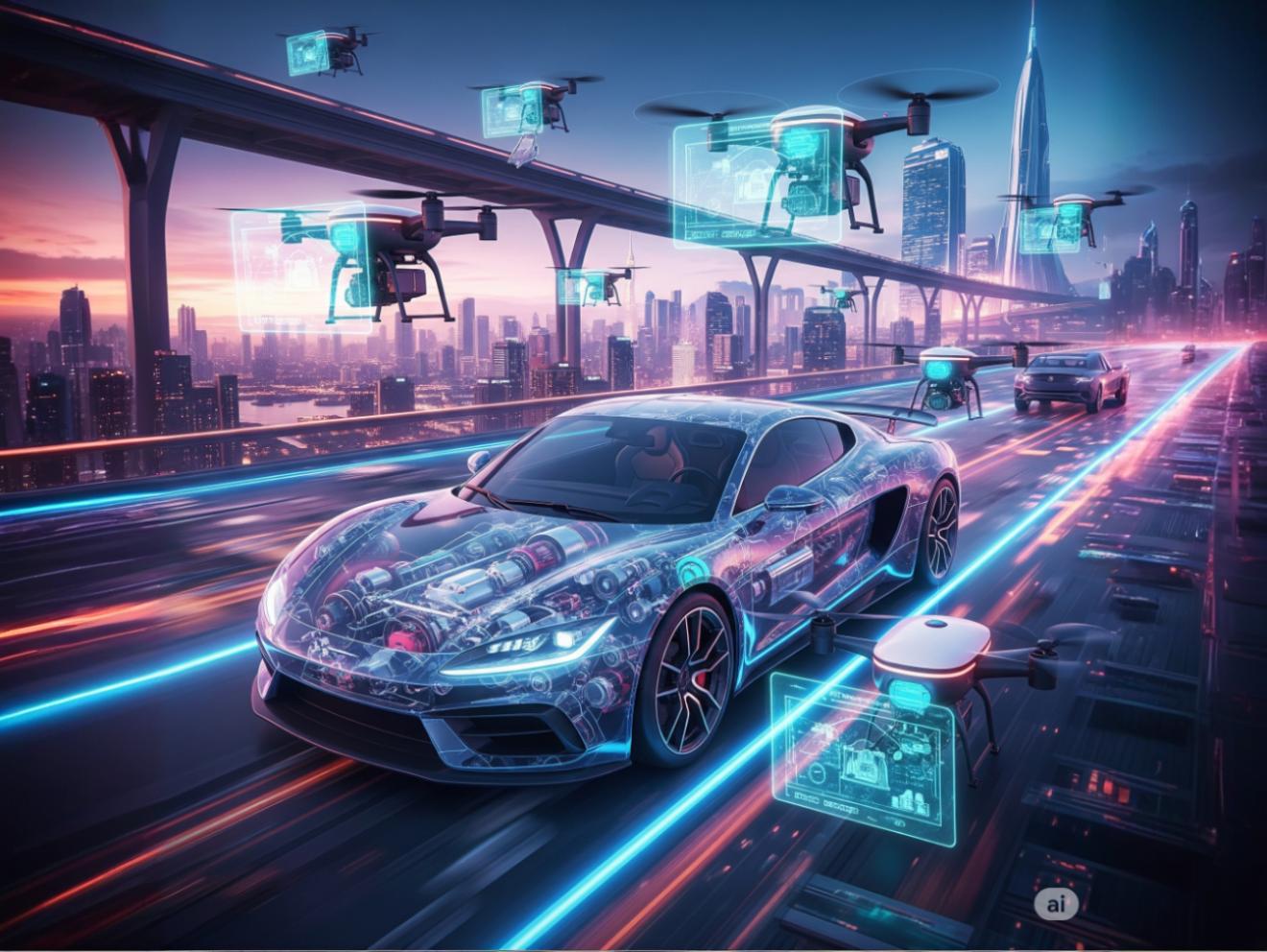The automobile industry is one of the most influential and innovative sectors in the world today. From the invention of the first gasoline-powered vehicle to the current surge in electric and autonomous cars, the industry has continuously redefined mobility, luxury, safety, and sustainability. In 2025, we stand at the crossroads of tradition and transformation, where classic engineering meets cutting-edge technology.
A Brief Look at the Past
The story of automobiles began in the late 19th century when Karl Benz created the first practical car powered by an internal combustion engine. Over the decades, major automotive brands such as Ford, Mercedes-Benz, Toyota, and General Motors have revolutionized transportation. The assembly line production method, introduced by Henry Ford in 1913, made cars more affordable and accessible, giving rise to the modern automobile culture.
By the late 20th century, the car had become more than just a vehicle—it was a symbol of freedom, identity, and status.
Current Landscape of the Automobile Industry
In 2025, the automobile industry is expected to be a massive global enterprise worth over $3 trillion, employing tens of millions of people and indirectly impacting countless others. From manufacturing plants to dealerships, from technology providers to marketing firms—the ecosystem is vast and intricate.
Key players in today’s automobile market include:
- Traditional automakers: Toyota, Ford, BMW, Volkswagen, Honda, etc.
- Electric vehicle leaders: Tesla, BYD, Rivian, Lucid Motors, NIO.
- Tech collaborations: Apple, Google, and Xiaomi have entered the automotive field with smart car technologies.
Major Trends Shaping the Industry
1. Electrification
The push for sustainability has turned electric vehicles (EVs) into the next big thing. Governments worldwide are offering incentives for EV buyers, setting deadlines to ban internal combustion engine vehicles, and investing in EV infrastructure. Companies like Tesla and BYD are already market leaders, but traditional carmakers are rapidly transitioning their fleets to electric cars.
Benefits of EVs:
- Zero tailpipe emissions
- Lower fuel costs
- Reduced maintenance
- Government tax incentives
2. Autonomous Driving
Self-driving technology is advancing rapidly, driven by companies like Waymo, Tesla, and Cruise. Although not yet fully mainstream, autonomous features such as lane assist, adaptive cruise control, and self-parking are already widely available.
In the future, full autonomy could reduce accidents, transform logistics, and change the way cities are planned—imagine a world without traffic lights or congestion.
3. Connected Cars
Modern vehicles are becoming data hubs on wheels. With Internet of Things (IoT) integration, cars can now:
- Communicate with other vehicles (V2V)
- Connect to traffic signals and infrastructure (V2I)
- Offer real-time GPS, traffic, and safety data
This connectivity is not just about convenience—it also improves safety and efficiency.
4. Sustainability & Green Manufacturing
Beyond just producing electric cars, manufacturers are shifting toward greener practices in their supply chains. Which includes:
- Recyclable materials for interiors
- Reduced water and energy consumption in factories
- Partnerships with ethical raw material providers
5. Shared Mobility
The rise of ride-sharing platforms, such as Uber, Ola, and Lyft, has led to a decline in personal car ownership in urban areas. The future may see more people choosing subscription models, car-sharing services, and mobility-as-a-service (MaaS) options.
Challenges Facing the Automobile Industry
1. Supply Chain Disruptions
The COVID-19 pandemic and ongoing geopolitical tensions have highlighted the fragility of global supply chains. Shortages in semiconductors, batteries, and raw materials have led to delays in vehicle production and delivery.
2. Regulatory Pressure
Automakers now face strict regulations on emissions, safety, and cybersecurity. Meeting global compliance standards while remaining profitable is a complex balancing act.
3. Consumer Expectations
Today’s car buyers expect more than just transportation—they want a personalized, tech-integrated, and sustainable experience. Brands that fail to innovate risk losing relevance.
What Does the Future Hold?
Flying Cars and Air Mobility
Once a concept of science fiction, companies like Joby Aviation, AeroMobil, and Hyundai are actively working on flying cars or air taxis, while mass adoption is still a decade away, urban air mobility could change the way people commute in megacities.
Solid-State Batteries
Current lithium-ion batteries have limitations in range and charging speed. Solid-state batteries promise faster charging, higher energy density, and greater safety—potentially revolutionizing EVs by the end of the decade.
Hydrogen-Powered Vehicles
While EVs dominate the spotlight, hydrogen fuel cell technology is quietly gaining ground, especially in heavy-duty transportation. Brands like Toyota (Mirai) and Hyundai (NEXO) are already exploring this alternative.
Conclusion
The automobile industry is at a transformative moment in its history. It is embracing cleaner energy, more innovative tech, and a redefined idea of mobility. Whether it’s an electric SUV, a self-driving taxi, or even a flying car, the future of transportation promises to be efficient, safe, and thrilling. For both consumers and industry professionals, staying informed and adaptive is the key to navigating this fast-paced road ahead.
FAQs – Automobile Industry
Q1. What is the biggest change in the automobile industry today?
The shift toward electric and autonomous vehicles is the most significant change, driven by environmental concerns, technological advancements, and regulatory mandates.
Q2. Are electric cars better for the environment?
Yes, electric vehicles produce zero tailpipe emissions and have a smaller carbon footprint, especially when powered by renewable energy. However, battery production still has some environmental impact.
Q3. Will autonomous vehicles replace drivers completely?
Not yet. Fully autonomous vehicles are still under development and face legal, ethical, and technological challenges. However, semi-autonomous features are already common.
Q4. What are connected cars?
Connected cars are vehicles that utilize the internet and wireless technology to communicate with the driver, other cars, and infrastructure. They offer navigation, diagnostics, safety alerts, and more.
Q5. Which is better: buying an EV now or waiting?
If you’re in an area with charging infrastructure and government incentives, it’s a great time to make the switch. However, battery technology is improving rapidly, so waiting could mean more range and lower costs.
Q6. Is the automobile industry a good career path?
Yes, especially for those interested in engineering, AI, environmental science, and business. The industry is evolving, and new skill sets are in high demand.
Q7. What’s the future of car ownership?
Urbanization, environmental concerns, and shared mobility trends suggest that individual car ownership may decline, especially in cities. Subscription and ride-sharing models may dominate.

